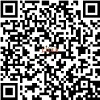(2) Sri Sumarwati
(3) * Laela Sagita
(4) Dzaki Fadhlurrohman
*corresponding author
AbstractSome of the android-based mobile game genres that are currently very popular such as adventure, first-person shooter, fighting, racing, and others. This development should provide opportunities in the field of education to make games not only for fun but also for education. The purpose of this study was to produce educational games that were valid, practical, and had potential effects to improve the mathematical understanding of the relationship and function of junior high school students. The research method used is R&D (research & development) using the ADDIE model. The data collection techniques used were documentation, interviews, and tests of mathematical comprehension abilities. The results obtained from the game "The Incredible Boong Gi" are valid with an average of 96.70% of expert validators and media validators. The results of the practicality questionnaire from 9 students averaged 90.32%. The results of data analysis show that educational RPG games have valid, practical criteria and have potential effects. RPG games are valid in terms of relevance, systematics, student-centered compatibility, game design, and compatibility. RPG games get practical results from implementation in small groups. Furthermore, the educational RPG prototype has the potential effect of improving students' mathematical understanding abilities. RPG games provide a fun learning atmosphere, by playing students can also learn. Making RPG games is also not difficult, according to the competence of students to be achieved and challenges the creativity of the teacher.
KeywordsRole Playing Game, Interactive Learning, ADDIE Model, Mathematical Understanding Ability
|
DOIhttps://doi.org/10.31763/ijele.v3i2.217 |
Article metrics10.31763/ijele.v3i2.217 Abstract views : 3936 | PDF views : 1169 |
Cite |
Full Text Download Download
|
References
[1] M. R. Ramdhani, B. Usodo, and S. Subanti, “Student’s mathematical understanding ability based on self-efficacy,†in Journal of Physics: Conference Series, 2017, vol. 909, no. 1, p. 12065, doi: 10.1088/1742-6596/909/1/012065.
[2] A. Minarni, E. E. Napitupulu, and R. Husein, “Mathematical understanding and representation ability of public junior high school in North Sumatra,†J. Math. Educ., vol. 7, no. 1, pp. 43–56, 2016, doi: 10.22342/jme.7.1.2816.43-56, doi: 10.22342/jme.7.1.2816.43-56.
[3] E. E. Rohaeti and M. Bernard, “the Students’ Mathematical Understanding Ability Through Scientific-Assisted Approach of Geogebra Software,†Infin. J., vol. 7, no. 2, p. 165, 2018, doi: 10.22460/infinity.v7i2.p165-172, doi: 10.22460/infinity.v7i2.p165-172.
[4] H. Hendriana, “Teachers’ hard and soft skills in innovative teaching of mathematics,†World Trans. Eng. Technol. Educ., vol. 15, no. 2, pp. 145–150, 2017, available at: Google Scholar.
[5] I. Nuryasintia and L. A. Wibowo, “Learning Activeness through Learning Media and Class Management,†vol. 65, no. Icebef 2018, pp. 145–148, 2019, doi: 10.2991/icebef-18.2019.35, doi: 10.2991/icebef-18.2019.35.
[6] Setiyani, F. Ferdianto, R. Meidasari, and L. Sagita, “Designing educational game android to improve mathematical understanding ability on fraction,†J. Phys. Conf. Ser., vol. 1188, no. 1, 2019, doi: 10.1088/1742-6596/1188/1/012067.
[7] R. Rahaju and S. R. Hartono, “Pembelajaran Matematika Berbasis Permainan Monopoli Indonesia,†JIPMat, vol. 2, no. 2, 2017, doi: 10.26877/jipmat.v2i2.1977, 10.26877/jipmat.v2i2.1977.
[8] C. Puspitasari, “A New Tool To Facilitate Learning Reading For Early Childhood,†Malaysian Online J. Educ. Technol., vol. 5, no. 3, pp. 1–15, 2017, available at: Google Scholar.
[9] N. D. Rahmawati, A. Buchori, and B. Bhihikmah, “Pengembangan Strategi Permainan Tradisional Sunda Manda Pada Pembelajaran Matematika Di Smp,†JIPMat, vol. 1, no. 2, 2017, doi: 10.26877/jipmat.v1i2.1243, doi: 10.26877/jipmat.v1i2.1243.
[10] L. Ariyanto, N. D. Rahmawati, and A. Haris, “Pengembangan Mobile Learning Game Berbasis Pendekatan Kontekstual Terhadap Pemahaman Konsep Matematis Siswa,†JIPMat, vol. 5, no. 1, pp. 36–48, 2020, doi: 10.26877/jipmat.v5i1.5478.
[11] A. Suprianto, F. Ahmadi, and T. Suminar, “The Development of Mathematics Mobile Learning Media to Improve Students’ Autonomous and Learning Outcomes,†J. Prim. Educ., vol. 8, no. 1, pp. 84–91, 2019, available at: Google Scholar.
[12] F. Martin and J. Ertzberger, “Here and now mobile learning: An experimental study on the use of mobile technology,†Comput. Educ., vol. 68, pp. 76–85, 2013, doi: 10.1016/j.compedu.2013.04.021.
[13] M. I. I. Haque and D. A. Zuliestiana, “Analisis Positioning Channel Media Review Smartphone Berdasarkan Persepsi Penonton Youtube Di Indonesia Dengan Menggunakan Metode Perceptual Mapping,†eProceedings Manag., vol. 5, no. 2, 2018, available at: Google Scholar.
[14] J. Bartley et al., “World of workout: A contextual mobile RPG to encourage long term fitness,†Heal. 2013 - Proc. 2nd ACM SIGSPATIAL Int. Work. Use GIS Public Heal. Conjunction with 21st ACM SIGSPATIAL Int. Conf. Adv. Geogr. Inf. Syst., pp. 60–67, 2013, doi: 10.1145/2535708.2535718.
[15] S. Amami Pramuditya, M. S. Noto, and D. Syaefullah, “Game Edukasi Rpg Matematika,†Eduma Math. Educ. Learn. Teach., vol. 6, no. 1, p. 77, 2017, doi: 10.24235/eduma.v6i1.1701.
[16] D. Ong, C. Y. Yeng, C. W. Hong, and K. T. Young, “Motivation of Learning : an Assessment of the Practicality and Effectiveness of Gamification Within a Tertiary Education System in Malaysia,†World Acad. Res. Educ. Sch. Business, Soc. Sci. Humanit. Educ. (In Assoc. with Acad. World Financ. Banking, Manag. IT) Conf. Proc., vol. 1, no. 1, pp. 131–146, 2013, available at: Google Scholar.
[17] Y. R. Shi and J. L. Shih, “Game Factors and Game-Based Learning Design Model,†Int. J. Comput. Games Technol., vol. 2015, 2015, doi: 10.1155/2015/549684.
[18] G. H. Lee, A. Z. Talib, W. M. N. W. Zainon, and C. K. Lim, “Learning history using role-playing game (RPG) on mobile platform,†Lect. Notes Electr. Eng., vol. 279 LNEE, pp. 729–734, 2014, doi: 10.1007/978-3-642-41674-3_104.
[19] B. S. Ginting and F. Ramadhan, “PERANCANGAN GAME BECOME A KING BERBASIS Budi Serasi Ginting , 2 Fajar Ramadhan,†Manaj. Inform. Komputerisasi Akunt., vol. 2, no. 1, pp. 12–21, 2018, available at: Google Scholar.
[20] M. E. Joorabchi and M. S. El-Nasr, “Measuring the impact of knowledge gained from playing FPS and RPG games on gameplay performance,†Lect. Notes Comput. Sci. (including Subser. Lect. Notes Artif. Intell. Lect. Notes Bioinformatics), vol. 6972 LNCS, pp. 300–306, 2011, doi: 10.1007/978-3-642-24500-8_33.
[21] F. Bellotti et al., “Designing serious games for education: From pedagogical principles to game mechanisms,†Proc. Eur. Conf. Games-based Learn., vol. 2011-Janua, pp. 26–34, 2011, available at: Google Scholar.
[22] D. B. Agusdinata and H. Lukosch, “Supporting Interventions to Reduce Household Greenhouse Gas Emissions: A Transdisciplinary Role-Playing Game Development,†Simul. Gaming, vol. 50, no. 3, pp. 359–376, 2019, doi: 10.1177/1046878119848135.
[23] I. M. Tegeh and I. M. Kirna, “Pengembangan Bahan Ajar Metode Penelitian Pendidikan dengan ADDIE Model,†J. Pendidik., vol. 11, no. 1, p. 16, 2013, available at: Google Scholar.
[24] S. A. Pramuditya, M. S. Noto, and R. N. Azhar, “Mathematics Media Instruction-Based Android for X-Grade Senior High School,†J. Educ. Expert., vol. 1, no. 1, p. 1, 2018, doi: 10.30740/jee.v1i1p1-10.
[25] C.-M. Hung, I. Huang, and G.-J. Hwang, “Effects of digital game-based learning on students’ self-efficacy, motivation, anxiety, and achievements in learning mathematics,†J. Comput. Educ., vol. 1, no. 2–3, pp. 151–166, 2014, doi: 10.1007/s40692-014-0008-8.
[26] M. P. Chen, Y. T. Wong, and L. C. Wang, “Effects of type of exploratory strategy and prior knowledge on middle school students’ learning of chemical formulas from a 3D role-playing game,†Educ. Technol. Res. Dev., vol. 62, no. 2, pp. 163–185, 2014, doi: 10.1007/s11423-013-9324-3.
[27] A. Kurniati, Nadia, F. Tanzil, and F. Purnomo, “Game Development ‘tales of Mamochi’ with Role Playing Game Concept Based on Android,†Procedia Comput. Sci., vol. 59, no. Iccsci, pp. 392–399, 2015, doi: 10.1016/j.procs.2015.07.549.
[28] M. P. Chen and H. Y. Ren, “Designing a RPG game for learning of mathematic concepts,†Proc. - 2nd IIAI Int. Conf. Adv. Appl. Informatics, IIAI-AAI 2013, pp. 217–220, 2013, doi: 10.1109/IIAI-AAI.2013.51.
[29] S. A. Pramuditya, M. S. Noto, and D. Syaefullah, “The educational game design on relation and functionmaterials,†J. Phys. Conf. Ser., vol. 1013, no. 1, 2018, doi: 10.1088/1742-6596/1013/1/012138.
[30] A. A. Rahman and A. Angraeni, “Empowering learners with role-playing game for vocabulary mastery,†Int. J. Learn. Teach. Educ. Res., vol. 19, no. 1, pp. 60–73, 2020, doi: 10.26803/ijlter.19.1.4.
[31] Q. Li, C. Lemieux, E. Vandermeiden, and S. Nathoo, “Are you ready to teach secondary mathematics in the 21st century? A study of preservice teachers’ digital game design experience,†J. Res. Technol. Educ., vol. 45, no. 4, pp. 309–337, 2013, doi: 10.1080/15391523.2013.10782608.
[32] H. W. H. Din, “Play to learn: Exploring online educational games in museums,†ACM SIGGRAPH 2006 Educ. Program, SIGGRAPH ’06, 2006, doi: 10.1145/1179295.1179309.
[33] Z. Guo, “Based on the RMXP RPG game design and implementation,†Adv. Mater. Res., vol. 1044–1045, pp. 1102–1105, 2014, doi: 10.4028/www.scientific.net/AMR.1044-1045.1102.
[34] Risnawati, Z. Amir, and D. Wahyuningsih, “The Development of Educational Game as Instructional Media to Facilitate Students’ Capabilities in Mathematical Problem Solving,†J. Phys. Conf. Ser., vol. 1028, no. 1, 2018, doi: 10.1088/1742-6596/1028/1/012130.
[35] S. T. Yong, P. Gates, and I. Harrison, “Digital games and learning mathematics: Student, teacher and parent perspectives,†Int. J. Serious Games, vol. 3, no. 4, 2016, doi: 10.17083/ijsg.v3i4.112.
[36] P. Media et al., “Pengembangan Media Permainan Kartu Uno Untuk Meningkatkan Pemahaman Konsep Dan Karakter Siswa Kelas Viii Tema Optik,†Unnes Sci. Educ. J., vol. 4, no. 1, pp. 711–719, 2015, doi: 10.15294/usej.v4i1.4974, available at: Google Scholar.
[37] J. Byun and C. S. Loh, “Audial engagement: Effects of game sound on learner engagement in digital game-based learning environments,†Comput. Human Behav., vol. 46, pp. 129–138, 2015, doi: 10.1016/j.chb.2014.12.052.
[38] M. D. Dickey, “World of Warcraft and the impact of game culture and play in an undergraduate game design course,†Comput. Educ., vol. 56, no. 1, pp. 200–209, 2011, doi: 10.1016/j.compedu.2010.08.005.
Refbacks
- There are currently no refbacks.
Copyright (c) 2021 Setiyani Setiyani, Sri Sumarwati, Laela Sagita, Dzaki Fadhlurrohman

This work is licensed under a Creative Commons Attribution-ShareAlike 4.0 International License.

International Journal of Education and Learning
ISSNÂ 2684-9240
Published by Association for Scientific Computing Electronics and Engineering (ASCEE)
W : http://pubs2.ascee.org/index.php/ijele
E : zalik@ascee.org

This work is licensed under a Creative Commons Attribution-ShareAlike 4.0 International License.






















